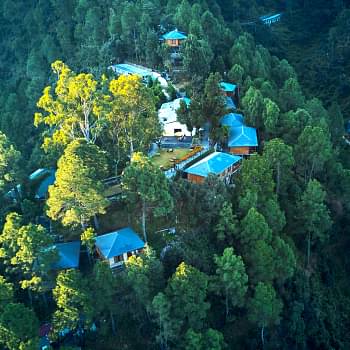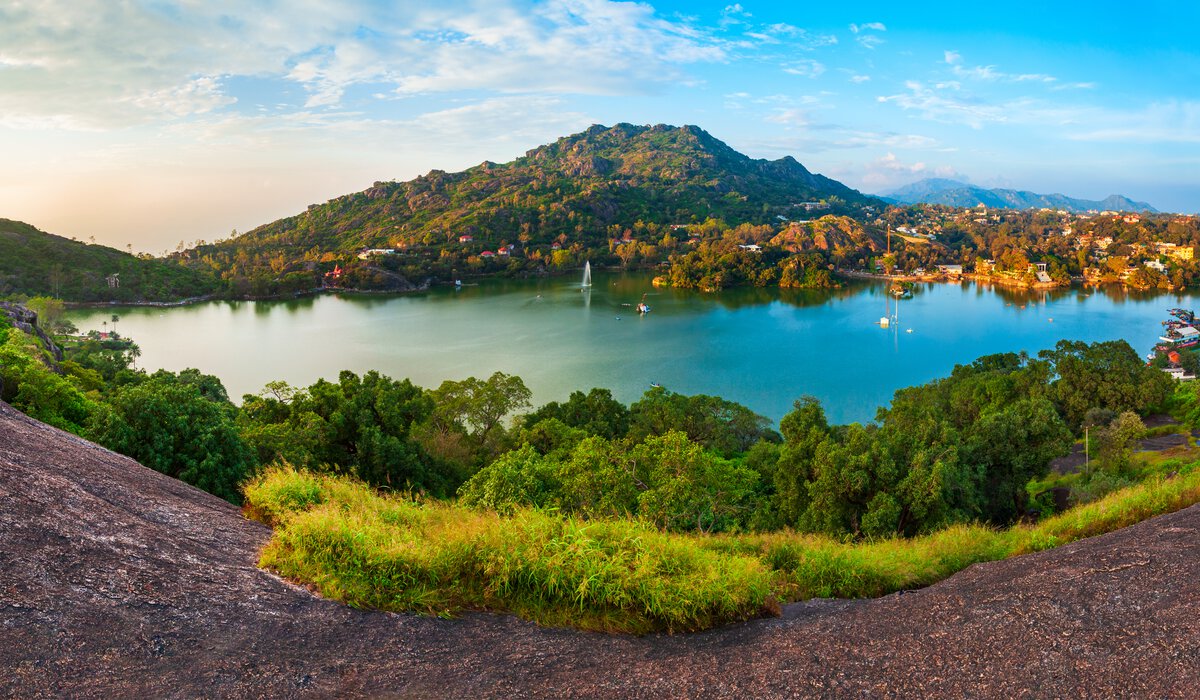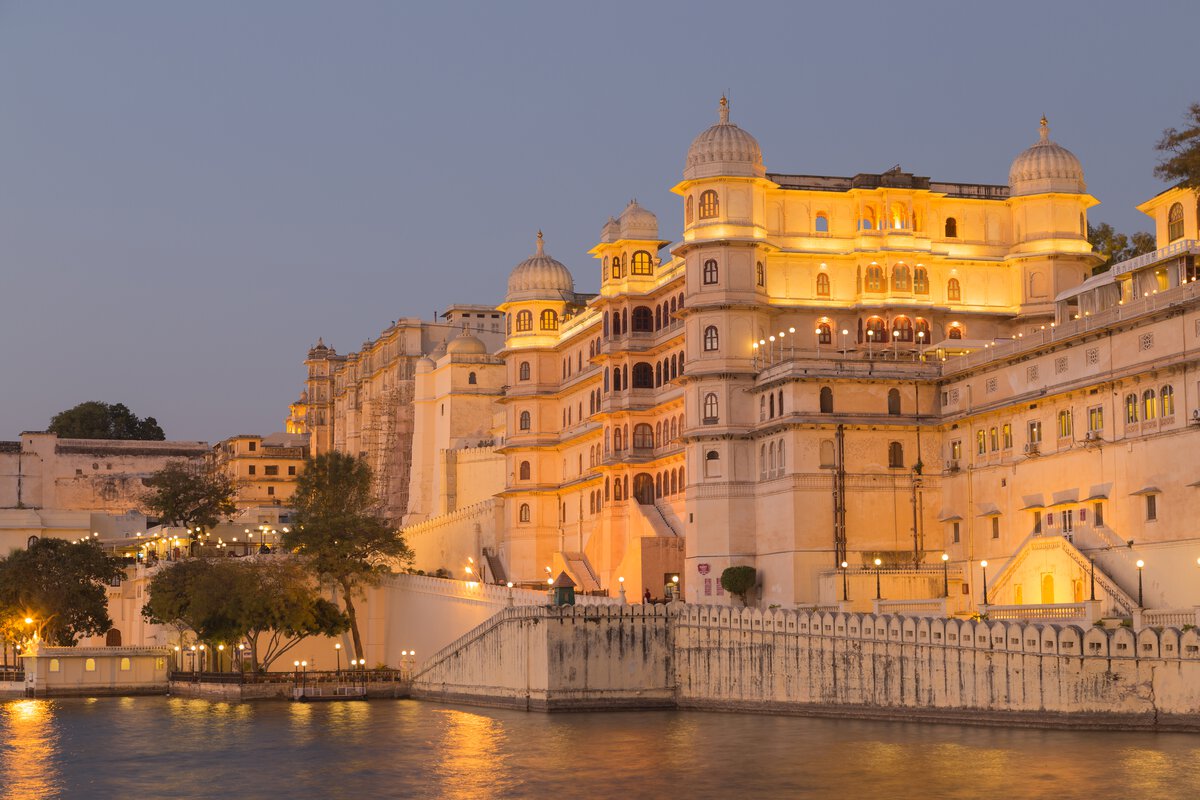February 28, 2024
Udaipur vs Mount Abu : What Would It Be- City Or A Hill Station?
CM Content Team


View all
140+
Resorts
February 28, 2024
CM Content Team
Rajasthan, a jewel in India’s crown is an archetypal land of Maharajas, medieval forts, and vivacious festivals. Nestled in this color-charged state are two charismatic cities possessing riveting tales worth telling. The most captivating draws, both Udaipur and Mount Abu attract countless travelers around the year to unveil their historic treasures. Udaipur vs Mount Abu, picking one out of the two always seems difficult.
Where Mount Abu an oasis in the desert and the only hill station entices visitors with its diverse typography featuring rocky terrain, overcast skies, and panoramic views. Udaipur on the other hand charms travelers with its blue shimmering lakes, fantastical palaces, and colorful bazaars.
Let’s navigate through both of these two titillating cities unraveling their true essence before we decide upon Mount Abu or Udaipur which is better.
Mount Abu vs Udaipur

Mount Abu, has a history dating back to the ancient times of the Puranas. Legend has it that Mount Abu is named after Arbuda, a serpent who rescued Nandi, Lord Shiva's bull, from drowning. The mountain became a revered site and home to sages and hermits. Historically, Mount Abu has been a retreat for the Rajput royals and sages alike. It gained prominence during the rule of the Chauhan dynasty and later, it became a part of the Rajputana states.
Udaipur, known as the "City of Lakes," has a rich history steeped in Rajputana royalty. Founded by Maharana Udai Singh II in 1559, Udaipur served as the capital of the Mewar Kingdom. The city's founding legend narrates that Maharana Udai Singh II discovered a sage meditating beside Lake Pichola, who advised him to establish a city at that location. Udaipur became a stronghold of the Mewar rulers, who resisted numerous invasions over the centuries.
While Mount Abu's history intertwines spirituality, ancient legends, and architectural brilliance, Udaipur narrates tales of Rajput valor and regal grandeur.

Mount Abu, which once served as a summer retreat for the royals is speckled with hills, gardens lakes, and jungles. Home to the captivating Nakki Lake, a boat ride across its enchanting waters is an experience worth partaking in. Dotted with natural trails, The Craigs Point, Trevor's Tank, and Plummy Trek take one deep inside the lush green forests. Opening up to breathtaking views is Guru Shikhar, the peak of the Aravalli ranges.
Udaipur characterizing an unmatched romantic setting is adorned with timeless lanes leading to dream-like palaces, temples, and havelis. Lake Pichola, Fateh Sagar, and Swaroop Sagar together offer sweeping views of the Aravallis framing the city. A Boat ride opens up to Udaipur’s grandeur of Heritage Hotels and picturesque sections of this former historic capital of the kingdom of Mewar.
Where Mount Abu woos visitors with a slice of adventure, Udaipur leaves them awe-struck by its architectural wonders.

Mount Abu features a pleasing climate as compared to the plains. The best time to visit Mount Abu is during the summer months starting from April to June when temperatures range from 23°C to 34°C, offering the much-desired respite to travelers from the scorching heat of the sun experienced by the areas in the lower reaches. The months between October and February with temperatures ranging from 12°C to 23°C also serve as a good time to visit Mount Abu.
Udaipur on the other hand features an arid climate, with hot summers and cool winters. October to March is considered the best time to visit Udaipur as the average temperature ranges from 10°C to 26°C. This time is perfect for outdoor activities like sightseeing and also is great to witness some of the vibrant festivals of Rajasthan.
Understanding the climate of Mount Abu and Udaipur beforehand is an ideal way to plan a visit to any of the two destinations.

Mount Abu, has a distinct architectural landscape influenced by its climate and historical significance. The Dilwara Temples, a group of Jain temples dating back to the 11th and 13th centuries, stand as architectural marvels. These temples showcase complex marble carvings, exquisite detailing, and a high level of craftsmanship.
Apart from the temples, Mount Abu features colonial-style architecture influenced by the British era. The town's bungalows and cottages exhibit a blend of Victorian and Indian architectural elements. The grandeur of structures like the Raj Bhawan, a colonial-era building now serving as the official residence of the Governor of Rajasthan, adds to Mount Abu's architectural diversity.
Udaipur renowned for its regal charm, boasts a rich architectural heritage featuring Rajputana style. The City Palace, a sprawling complex overlooking Lake Pichola, epitomizes Rajasthani architecture with its fascinating carvings, domes, and courtyards. The Jagdish Temple, dedicated to Lord Vishnu, showcases Indo-Aryan architecture with its diligently carved pillars and majestic spire.
The architecture of Udaipur's havelis, like the Bagore Ki Haveli and the Jag Mandir, features ornate facades, courtyards, and jharokhas, offering a glimpse into the opulence of Rajput rulers. The City Palace's Lake Palace, floating on Lake Pichola, is a prime example of Mewar architecture, displaying marble beauty against the backdrop of the water.
In essence, while Mount Abu embraces a mix of ancient Jain masterpieces and colonial-era structures, Udaipur showcases the grandeur of Rajputana architecture through its palaces, temples, and Havelis, creating a captivating architectural panorama.

The City Palace, a splendid blend of Rajasthani and Mughal architecture is a symbol of Udaipur's magnificence. The Pichola Lake offers an unforgettable boat ride and serves as a window to the charm of the Jag Mandir, an island palace on Lake Pichola. The Jagdish Temple, dedicated to Lord Vishnu, showcases elaborate carvings. The Bagore Ki Haveli, the Jag Mandir, and the Sajjangarh Palace, popularly known as the Monsoon Palace, are some of Udaipur’s must-visit places.
The Dilwara Temples, a complex of dexterously carved marble temples, are a must-visit, showcasing incredible craftsmanship. Nakki Lake, surrounded by hills and mythological legends, provides an amazing setting for boating. The Sunset Point and Honeymoon Point offer spectacular views of the sun setting over the hills. To experience nature, the Guru Shikhar, the highest point in Rajasthan, and the lush greenery of the Arbuda Devi Temple are ideal. The Mount Abu Wildlife Sanctuary appeals to wildlife enthusiasts with its diverse flora and fauna.
Both Mount Abu and Udaipur present a diverse range of attractions, from historical and architectural marvels to natural landscapes, making them standout destinations in Rajasthan.

Dilwara Temples Visit: Explore the exquisite Dilwara Temples, renowned for their multifarious marble carvings and stunning architecture.
Boating in Nakki Lake: Enjoy a leisurely boat ride on Nakki Lake, surrounded by hills offering a tranquil setting.
Sunset Point and Honeymoon Point: Witness delightful sunsets at these viewpoints, providing enticing views of the surrounding landscapes.
Guru Shikhar Exploration: Hike or drive to Guru Shikhar, the highest point in Rajasthan, for splendid views of the Aravalli Range.
Wildlife Safari in Mount Abu Wildlife Sanctuary: Experience the diverse flora and fauna of the region through a safari in the Mount Abu Wildlife Sanctuary.
City Palace Visit: Explore the majestic City Palace, a magnificent complex showcasing a blend of Rajasthani and Mughal architectural styles.
Boat Ride on Lake Pichola: Take a boat ride on Lake Pichola to admire the scenic beauty and visit attractions like Jag Mandir and Jag Niwas.
Visit Jagdish Temple: Witness the intricate architecture of Jagdish Temple, dedicated to Lord Vishnu, reflecting Udaipur's rich cultural heritage.
Cultural Exploration at Bagore Ki Haveli: Immerse yourself in Udaipur's cultural heritage with a visit to Bagore Ki Haveli, known for its museum and cultural performances.
Panoramic Views from Sajjangarh Palace: Visit the Monsoon Palace (Sajjangarh Palace) to enjoy bewitching views of Udaipur and its surroundings, especially during sunset.
Both Mount Abu and Udaipur offer an amalgamation of cultural, historical, and natural attractions, providing diverse activities for visitors to immerse themselves in the rich heritage of Rajasthan.
If you seek historical richness and architectural marvels, Udaipur is preferable. However, for a tranquil hill retreat, Mount Abu stands out. Ultimately, the choice hinges on whether you prioritize nature's tranquility or the grandeur of historical and cultural landmarks. Gifting visitors with equally enthralling experiences both Mount Abu and Udaipur have something to entice even the choicest visitors.
Mahindra Holidays & Resorts India Ltd. (MHRIL), a part of Leisure and Hospitality sector of the Mahindra Group, offers quality family holidays primarily through vacation ownership memberships and brings to the industry values such as reliability, trust and customer satisfaction. Started in 1996, the company's flagship brand ‘Club Mahindra’, today has over 300,000 members , who can holiday at 140+ resorts in India and abroad.
We use cookies to personalise content and to provide you with an improved user experience.By Continuing to browse this site you consent to the use of cookies.Please visit our cookie policy for further details.

Welcome to ClubMahindra.com In order to provide a personalised experience for you, we use cookies to enable some website functionality. Cookies help us see which articles most interest you; allow you to easily share articles on social media channels; permit us to deliver content personalised to your interests and locations; along with many other site benefits. For more information, please review our Cookie Policy
When you visit any website, it may store or retrieve information on your browser, mostly in the form of cookies. This information might be about you, your preferences or your device and is mostly used to make the site work as you expect it to. The information does not usually directly identify you, but it can give you a more personalized web experience. Because we respect your right to privacy, you can choose not to allow some types of cookies. Click on the different category headings to find out more and change our default settings. However, blocking some types of cookies may impact your experience of the site and the services we are able to offer.
Because we respect your right to privacy, you can choose not to allow some types of cookies and you have the right to withdraw your consent by send a mail to email id [email protected]
These cookies are essential in order to enable you to move around the site and use its features, such as accessing secure areas of the site. Without these cookies, services you have asked for cannot be provided.
These cookies allow us to employ data analytics so we can measure and improve the performance of our site and provide more relevant content to you. These cookies don't collect information that identifies a visitor down to an individual level that is available to us. These cookies are not passing personally identifiable information to any external third party other than in limited cases when we engage a service provider to act on our behalf but who is then unable to use the data for their own purposes.
Performance cookies are generally third-party cookies from vendors we work with or who work on our behalf that collect information about your visit and use of the Club Mahindra website, for instance which pages you visit the most often, and if you get error messages from web pages. These cookies don't collect information that identifies a visitor. All information these cookies collect is anonymous and is only used to improve your overall experience on how the website works. Third party vendors may have access to this data and may use it to improve their overall services and offerings.
Functionality cookies allow a site to remember choices you make (such as your user name, language or the region you are in) and provide more enhanced, personal features. These cookies cannot track your browsing activity on other websites. They don't gather any information about you that could be used for advertising or remembering where you've been on the Internet outside our site.
Third-party advertising and social media cookies are used to (1) deliver advertisements more relevant to you and your interests; (2) limit the number of times you see an advertisement; (3) help measure the effectiveness of the advertising campaign; and (4) understand people's behaviour after they view an advertisement. They are usually placed on behalf of advertising networks with the site operator's permission. They remember that you have visited a site and quite often they will be linked to site functionality provided by the other organization. This may impact the content and messages you see on other websites you visit. If you do not allow these cookies you may not be able to use or see certain these sharing tools content on our website.